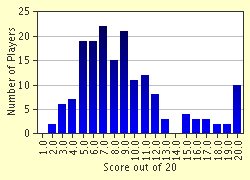Quiz Answer Key and Fun Facts
1. What was the treaty establishing the European Coal and Steel Community called?
2. Where was the headquarters of the High Authority of the European Coal and Steel Community?
3. Who was the first president of the High Authority of the European Coal and Steel Community?
4. What was the last remaining institution of the European Coal and Steel Community?
5. Who was the first president of the Commission of the European Economic Community?
6. When did the 'Merger Treaty' come into force?
7. Who was the first president of the Commission of the European Communities?
8. What was the fate of the European Defence Community?
9. When were the first direct elections for the European Parliament held?
10. Which was the first country to become an associate member of the European Communities?
11. When did the first wave of enlargement (of the original community of six countries) take place?
12. Who proposed the creation of the European Council?
13. When and where was the first European Council (summit) held?
14. People of which of these countries twice voted in a referendum against the membership of their country in the EC/EU?
15. When was the European Union created (in lieu of the European Community)?
16. Which country initially rejected the Maastricht Treaty?
17. When did the Schengen Agreement come into force?
18. During which European Council was the decision about opening of accession negotiations with the first few countries of Eastern and Central Europe made?
19. Which country joined the EMU (European Economic and Monetary Union) in 2001?
20. Who was the longest serving president of the European Commission (from the time of its creation until the first wave of the EU enlargement in 2004)?
Source: Author
Beatka
This quiz was reviewed by FunTrivia editor
bloomsby before going online.
Any errors found in FunTrivia content are routinely corrected through our feedback system.

